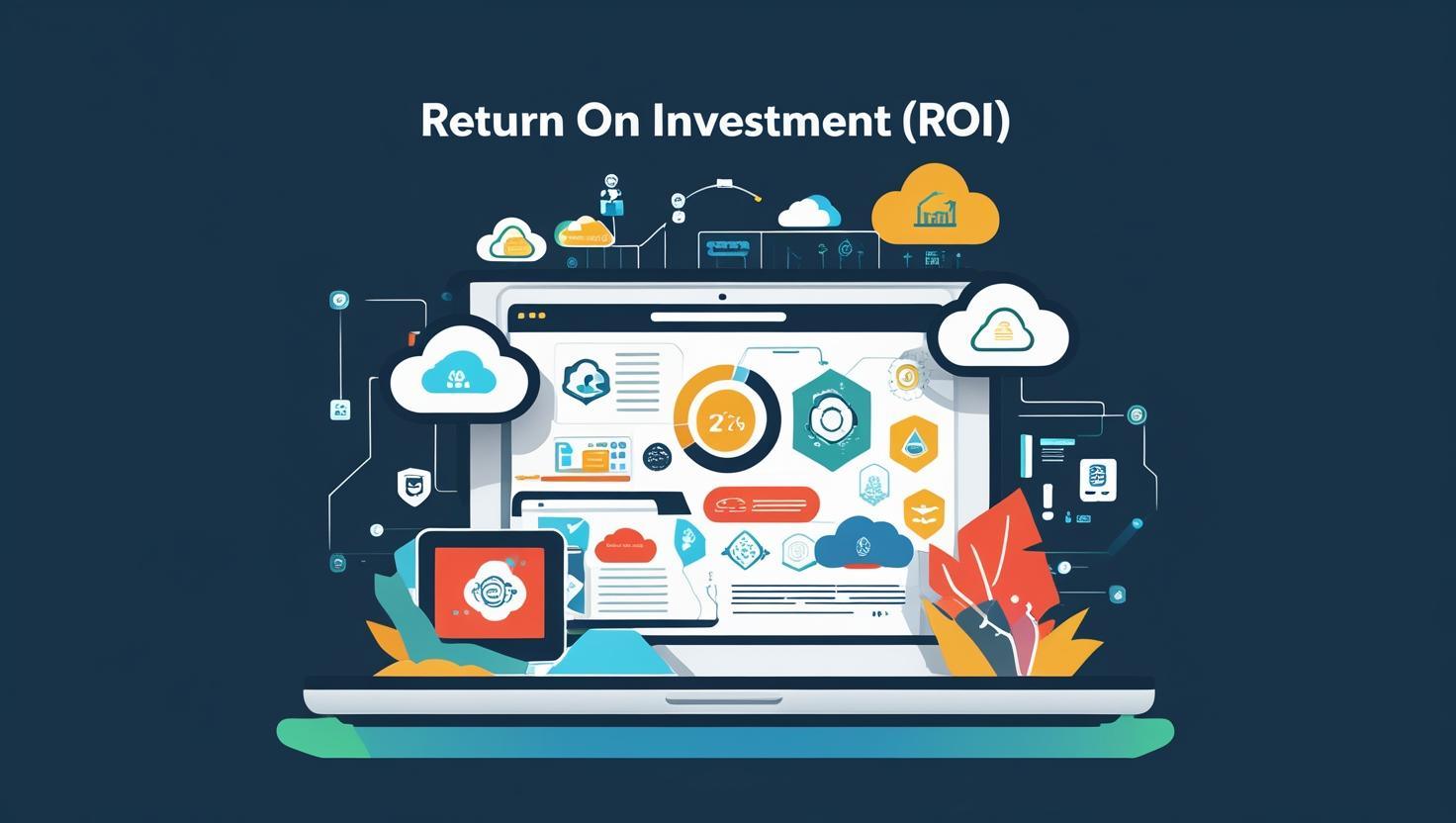Digital Transformation (DX) is becoming an operational necessity — not just to increase efficiency but to remain competitive in an increasingly complex and fast-moving environment. However, while many businesses are advancing with digital initiatives, the return on investment (ROI) can often appear ambiguous. Projects may feel directionally right, but leaders still ask: how do we know it’s working? Are we capturing enough value? And are we investing in the right places?
Unlike traditional infrastructure or procurement investments, DX efforts tend to be multi-phased, long-term, and capable of generating both direct and indirect benefits. Measuring ROI in this context demands a broader and more dynamic approach — one that acknowledges financial outcomes but also considers strategic value, operational resilience, and future readiness.

Why DX ROI Is Harder to Measure?
Traditional ROI models are built around simple input-output comparisons: a defined cost yields a defined benefit, often over a short time frame. DX initiatives do not always fit that pattern. Digital projects frequently span functions, impact multiple systems, and evolve over time. Value may accrue gradually, shift between departments, or emerge in a non-financial way, like improved decision-making, greater agility, or better compliance posture.
A common project that many companies implement is digitising supplier onboarding. The value may not be immediate cost savings. Instead, it might come through faster time-to-contract, lower error rates, better vendor data quality, and a stronger procurement position. These outcomes are real, measurable, and impactful — but they require a more thoughtful approach to ROI.
Five Value Dimensions
To evaluate digital investments more effectively, it’s useful to broaden the definition of ROI. In practice, successful DX projects tend to generate value across five overlapping dimensions.
1. Operational Efficiency :
This includes measurable reductions in manual work, cycle times, or process error rates. Automating document handling in logistics or integrating forecasting systems in inventory management often falls into this category.
Example KPIs:
- Hours of manual work saved per month
- Reduction in cycle time (e.g. order-to-cash, time-to-invoice)
- Fewer data entry or reconciliation errors
- Headcount reallocation from repetitive to strategic work.
2. New Revenue
Digital tools enhance customer experience, accelerate sales, or open new business models. A personalised ordering interface might not cut costs, but it could improve retention or increase order value.
Example KPIs:
- Increase in customer retention or lifetime value (CLV)
- Uplift in conversion or cross-sell rates
- Average order value (AOV) growth
- Revenue from digital channels or new products
3. Data and Insight Value:
Many projects, especially those that centralise or clean operational data, lay the groundwork for smarter decisions. Even if the benefits are indirect at first, they become enablers for future AI or predictive capabilities.
Example KPIs:
- Reduction in time to access key data
- Increase in forecasting accuracy
- Number of business decisions based on real-time dashboards
- Reduction in data silos or reconciliation delays
Projects that establish a common data layer across operations – such as standard inventory management – set the foundation for more predictive and adaptive systems.
4. Strategic Flexibility:
This includes the ability to adapt quickly to change, absorb supply shocks, or scale innovations across business units. While difficult to quantify, it’s often the most critical long-term outcome — especially in volatile sectors like energy or logistics.
Example KPIs:
- Time to deploy a new digital capability or system integration
- Speed of pivot during supply chain or market shocks
- Number of reusable components across business units (e.g. APIs, data models)
- Expansion readiness (e.g. ability to roll out to new regions)
5. Risk and Compliance Management:
Digital solutions can improve traceability, reduce regulatory breaches, and enhance visibility across processes.
Example KPIs:
- Reduction in compliance errors or audit findings
- Time saved on regulatory reporting
- Fewer missed deadlines for mandatory disclosures
- Increased traceability across data sources and reports
An ESG reporting tool that automates CBAM calculations, for example, may not directly increase revenue — but it protects the business from fines, reporting delays, or compliance failures.

Key Steps to Evaluate ROI in DX Projects
1. Define the Objective:
That means moving beyond implementation milestones (e.g., “launch CRM”) and instead articulating intended business outcomes (e.g., “reduce customer churn by 10%”). The clearer and more measurable the objective, the easier it becomes to define success.
2. Create A Baseline:
This requires collecting current-state data on how long tasks take, what error rates exist, how much time and money are spent on processes, or what the typical conversion rates look like. Without a baseline, comparisons of post-implementation are unclear.
3. Total Cost of Ownership:
This should include not just the technology spend — such as software licenses or infrastructure — but also the cost of implementation partners, internal resourcing, training, and ongoing support. Many organisations underestimate the cost of change management, which is often critical to adoption.
4. Identify Value Drivers:
Once these foundations are in place, the focus shifts to identifying value drivers. Where, exactly, will value come from? Some drivers will be direct, such as labour savings or reducing repetitive work. Others will be indirect, such as better insights that support strategic decisions. If some benefits are harder to quantify — such as improved employee experience or increased trust in operational data — it’s often useful to use proxy indicators, such as adoption rates or feedback scores.
5. Track and Refine:
Finally, ROI should be tracked over time, not assumed at launch. Dashboards that report on leading indicators (like usage patterns or time-to-completion) can provide early signals of whether value is being realised. Business units should also revisit their assumptions as more data becomes available — and refine projections accordingly. resilience.
Conclusion
The path to value from digital transformation does not follow a single formula. Some projects will deliver fast payback through process automation or cost savings. Others will lay the groundwork for long-term agility, insight, and innovation.
What matters is that value is pursued, carefully defined, and consistently measured – not just in money saved or earned, but in capabilities gained and risks reduced. The goal is not to justify digital investments after the fact, but to design and steer them toward impact from the beginning.
As businesses continue to invest in digital tools, platforms, and practices, companies that adopt a more dynamic and inclusive approach to ROI will be positioned to make smart bets, course-correct quickly, and scale what works.
Authors:
Simranjeet Riyat– AI Consultant
Chidi Akurunwa – AI Consultant




